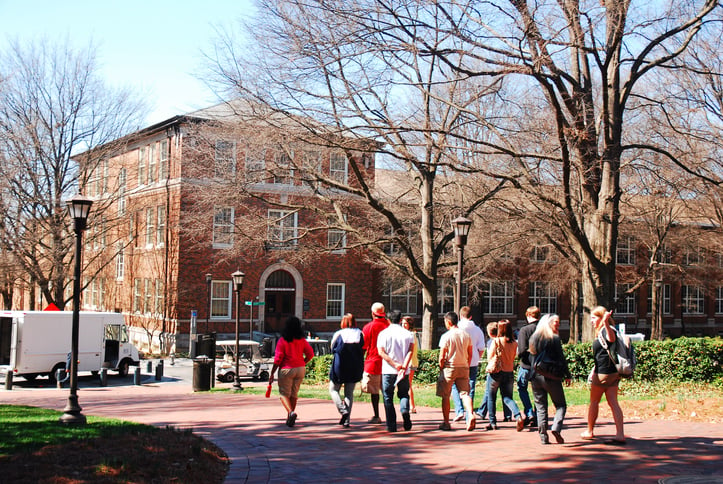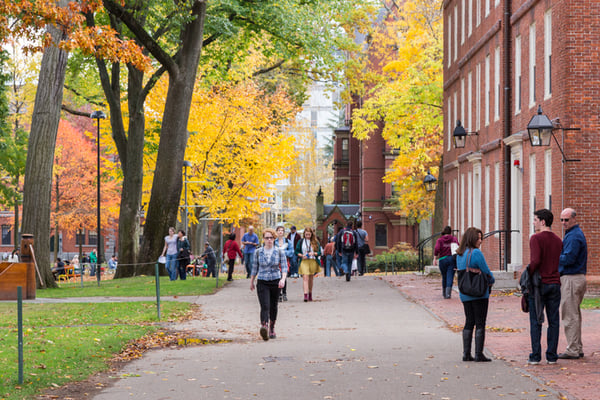- SERVICES
- HIGHER EDUCATION MARKETING
- ENGAGEMENT & ENROLLMENT MANAGEMENT
- STUDENT RECRUITMENT AGENCIES
- PROFESSIONAL EDUCATION & TRAINING
- WHO WE ARE
WHO WE ARE
Learn more about Keystone Education Group, including our leadership structure, why choose Keystone as your educational partner, and company press releases.
QUICK LINKS
- RESOURCES
RESOURCES
Find a range of helpful resources to help with your educational marketing. From on-demand webinars, reports & data, to customer testimonials and our downloadable media kit.
QUICK LINKS
- NEWS
- REQUEST A CALL

- Keystone Higher Education News
- Best Practices for Transfer Student Orientation
The transfer student market represents a massive student demographic which could significantly improve enrollment rates at your institution.
Transfer students need a specialized orientation to get information and resources to succeed in a new campus environment.
Here are some best practices for transfer student orientation that can help your institution create a streamlined transfer program.
Orientation goes beyond a single event
One of the most common mistakes in transfer student orientations is treating it like a single event. Campuses are condensed locales, often with buildings with multiple names, winding footpaths, and complicated maps. All future students should be given instructions on how to reach campus, find necessary buildings such as food halls, dorm rooms, relevant buildings to their major, and where to attend orientation.
In addition, local public transport lines should be explained, allowing students who may not have a car and are relying on shuttles, buses, and trains to learn how to reach their college of choice less stressfully.
Making campus welcoming
Transfer students often feel more unwelcome than the average student on campus. It may be a new area for them, where services they once used at a previous college now function differently. Colleges should integrate former transfer students into transfer student orientation processes. Often, tour guides on campus are provided by students; make separate groups for transfer students on these tours and personalize the tour guide to these groups to allow them a more personal look with someone who experienced what they are about to undergo at their new college.
Transfer students are often not from just in-state; they may be from another region of the country or another country entirely. These students should be taught about the area around them, giving them examples of banks or credit unions they can use, for example, and other nearby services they may need.

Furthermore, colleges use different processes from campus to campus. This can become tedious, resulting in unnecessary stress for new students. In addition, campus events for transfer students should be created, allowing them to find each other and make friendships they may not have otherwise had. Giving room to these students to feel welcome on campus will benefit their university experience.
The social side
Transfer student orientations are often focused on administrative explanations, such as registration, campus policies, tours, and moving into dorms. These should be expanded in a social sense, giving transfer students a view into campus culture. An expo into the various clubs and organizations during orientation would give students a place to work towards socially integrating into campus.
Key faculty members, such as administrators, deans, professors, and others, should be introduced to new students, forming a tie for people they may see around campus.
Using your alumni
Alumni are often invited to speak to new students at orientations, which should not be any different for transfer students. These alumni can provide a direct look into what a new transfer student’s success may look like.
Transfer student orientations should not be shorter than freshman orientations but should also offer flexibility as many students might be older or working alongside going to school. Often, new student orientations last a few days or up to a week and often allow freshman students some free time before classes begin to explore the campus at their own pace.
No two campuses are alike, and it should not be assumed that transfer students will more quickly understand the layout, processes, and resources a university offers.
Orientation, and beyond
After orientation, colleges should attempt to reach out to transfer students to continue and make the campus home for them.
Transfer student orientation is a complex process that can lead to many issues if not done well. For example, proper orientations can help ease student anxiety around fitting in at a new campus.
They are often a significant portion of a university’s income and should be treated equally during orientation and as a new student would. This process should be welcoming for all, especially those recently displaced from a previous home whose native language may not even be the same as the college.
More about:
Related Tags
Just For You
Top Picks
Higher Ed Chats Podcast
Listen to the latest episodes of our Higher Ed Chats Podcast. Hear from Higher Ed thought-leaders from around the world!
The Keystone Awards 2026:
Nominate your institution or a student

Recognize your your university, team, colleagues and students for a Keystone Award!
Subscribe
to get the latest news and updates


